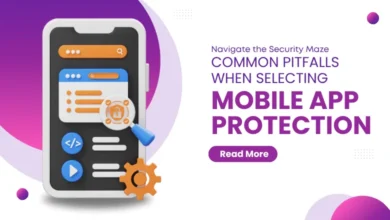IT Security: The Evolving Threat in Data Breach And Malware

In recent years, the landscape of data breaches impacting businesses and their customers has undergone a significant expansion. Nearly every company, regardless of size, is compelled to exercise caution in safeguarding against such breaches and ensuring the protection of the data entrusted to them by customers. Amidst this heightened awareness, endpoint security for business emerges as a pivotal component in fortifying defenses. Should a breach manifest, its repercussions can prove devastating for all parties involved.
What is a Data Breach?
Data breaches occur when someone obtains data from a business or government entity. The data can then be used for a variety of nefarious purposes. There are numerous ways for data to be stolen, and when it is, everyone involved will need to take care to minimize the impact it could have on their life. Businesses can work with IT experts like those at Charlotte IT Solutions to protect against data breaches and secure all private information.
How is the Data Obtained?
Data includes any personally identifying information, from social security numbers to addresses. All of this can be used by criminals once it’s obtained. The most common ways for the data to be obtained include the following.
- Stolen Credentials: Usernames and passwords have been included in data breaches in the past. If someone reused their password or didn’t change it, the stolen information can be used to log into business sites and obtain any data the employee can access.
- Phishing: Phishing involves emails, texts, or phone calls asking for the person’s login or other information. Often they pretend to be from the company, stating they need the information for a legitimate purpose. Once the person provides the information, the data can be easily accessed.
- Ransomware: Ransomware is software downloaded on a person’s computer, often without them knowing. The computer then freezes or has other issues and a pop-up message typically tells the user that money is needed to release the computer. Sending the money doesn’t do anything, though, as the goal is access to data.
- Malware: Malware is software that can be downloaded to someone’s computer. It can run in the background without being noticeable and will find data stored on the computer and send it to the criminal.
- System Vulnerabilities: If a system is not secure enough, a criminal may find a back entry into the system and be able to use that to extract the data they’re after. Various exploits exist that make this possible.
How is the Data Used After Being Stolen?
Once the data is stolen, there are numerous ways for a thief to use it. In most cases, the victim will end up discovering it at some point and it can impact their future. Some of the most common ways to use the data include the following.
- Sales: A criminal may not use the data themselves – they may decide to sell it on the dark web. This is where criminals can interact and it’s possible to purchase stolen data or other things that are illegal.
- Identity Theft: Stolen data can be used for identity theft, providing the criminal with a new identity they can use.
- Fraudulent Loans: A criminal may use the stolen data to apply for and receive loans. The loans will appear on the victim’s credit report, and it can be difficult to remove them.
- Insurance Fraud: Criminals may use the data to cover healthcare costs and other insurance-related expenses, creating huge bills that go on the victim’s credit.
- Future Data Breaches: Future data breaches may be possible if usernames and passwords were extracted during a breach. Criminals may use the same password on other sites to gain entry.
What Can be Done to Protect Against Malware?
Data breaches can be prevented in most cases. Businesses must keep their system as secure as possible to prevent unauthorized entry. Some of the ways they can do this are through the following.
- Caution Opening Emails: Emails opened should be from known senders. Do not click on links when reading an email from an unknown sender. The links may appear to be broken or to go to a different site, but can download malware or ransomware in the background on the computer.
- Robust Security Software: All businesses should use robust security software designed to protect against vulnerabilities in their system. Update software regularly to ensure it is using the latest security measures to protect against the newest ways to try to obtain data.
- Use Encryption: Encryption is one of the best ways to protect data. Even if someone can get access to the data, if it’s encrypted, they can’t read the data without the key. Encryption can be used for any personally identifying information a business stores or uses in its system.
- Update Passwords Regularly: All employees should be reminded to update their passwords regularly. This way, if someone does find out the password for an employee, they may not be able to use it before it’s changed.
- Avoid Reusing Passwords: Reusing old passwords can leave the system open to data breaches. Someone may not realize their old password has been compromised, and when they use it, they provide a way for a criminal to gain entry to the system.
- Use MFA: Multifactor Authorization requires more than just a password to enter the system. Often, a passcode is sent to a phone number or email to provide access. As the criminal won’t have access to the person’s phone, this can help prevent unauthorized access even if a password is compromised.
- Training for Employees: Training employees on security measures can help prevent user-error-related data breaches. It enhances company security and lowers the risk of unauthorized access by criminals.
Attempted data breaches are becoming far more common, but there are ways to protect against them. By following the tips here and working with IT specialists, businesses can help keep their business secure and protect against a data breach. If one does happen, working with experts is the best way to minimize the amount of damage done, protect the data, and safeguard the business’s reputation. Start working with an IT security company today to help prevent data breaches and theft.
Check out more articles like this!






